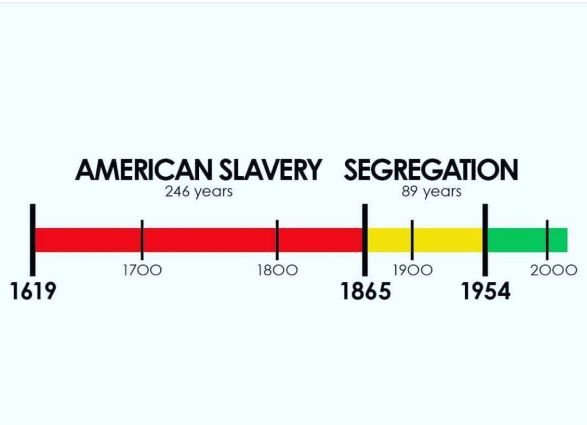Lesson 1
In this first lesson students will learn about the development of anti-Blackness from slavery to the ways it shows up today. For the second half of the lesson they will be able to explore how anti-Blackness shows up in different aspects of society and how pervasive it is.
WATCH:
LISTEN:
WATCH:
The Atlantic Slave Trade in Two Minutes
This is an interactive map that shows the ships crossing the Atlantic to bring enslaved people from Africa to the Americas. You can pause the map and click on any ship to see more information about it. Think about the information that is included, where did those sources come from?

Discussion Questions:
- What are some things that you noticed from the animated timeline of the Transatlantic Slave Trade?
- Did you realize how many different countries, especially European countries were involved in the slave trade?
- How has anti-Blackness evolved over time? How does it relate to racial capitalism?
How Does anti-Blackness show up in our society?
In class activity: Students will split up into small groups to look at the various ways that anti-Blackness manifests in US society. If you are interested in a topic that is not covered below, you are more than welcome to do your own research into anti-Blackness and bring in your own sources for class.
Anti-Blackness and Voter Restrictions:
Anti-Blackness and Police Brutality:
Anti-Blackness and Medicine:
School to Prison Pipeline:
Discussion Questions:
- Before this class, did you know what anti-Blackness was?
- How does anti-Blackness show up in different parts of society? Schools? Elections?
- Do you have any experiences with anti-Blackness? How do you see it show up in your life? In your community?
- How does colorism show up in different parts of society? Do you see it in your own community?
Lesson 2
The second lesson focuses on how Black Americans have resisted anti-Blackness and organized to fight for their human rights. This lesson discusses the Civil Rights Movement and the Black Panther Party and their approaches to resisting oppression. The lesson ends with thinking about what solidarity means.
WATCH:
READ:
Black Panther Party_Ten_Point_Program
How Non-Black People Of Color Can Work To Be Anti-Racist
7 Ways Non-Black People of Color Perpetuate Anti-Blackness
Discussion Questions:
- What issues was Black resistance organized around?
- What were some of the accomplishments of Black resistance movements? How did these movements benefit people who were not Black?
- Think back to the pyramid from the lesson on decolonization and racial capitalism. What is the relationship between White supremacy and anti-Blackness? How do non-Black people of color fit into this system?
- How can White people and non-Black people of color work to be anti-racist?